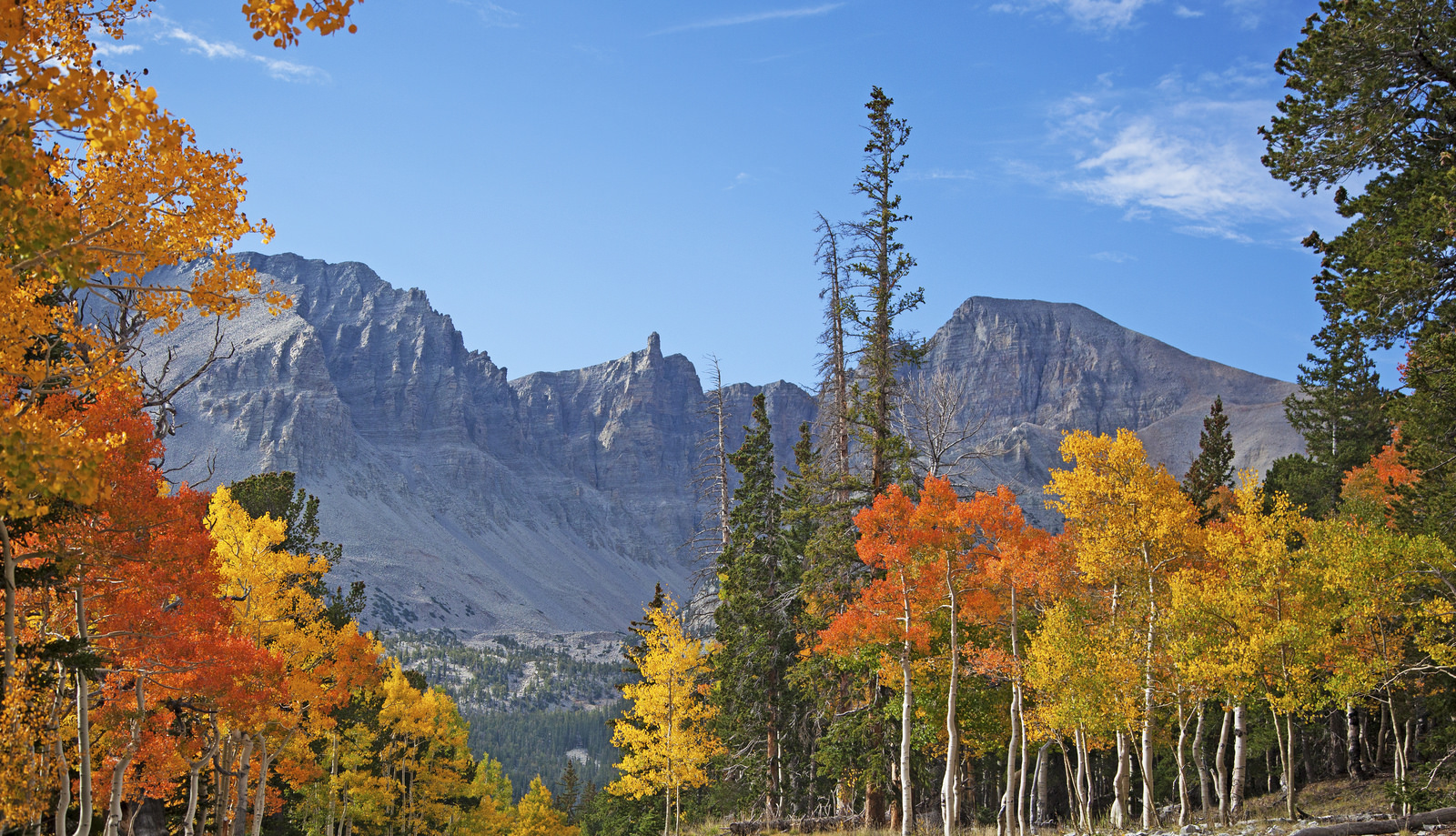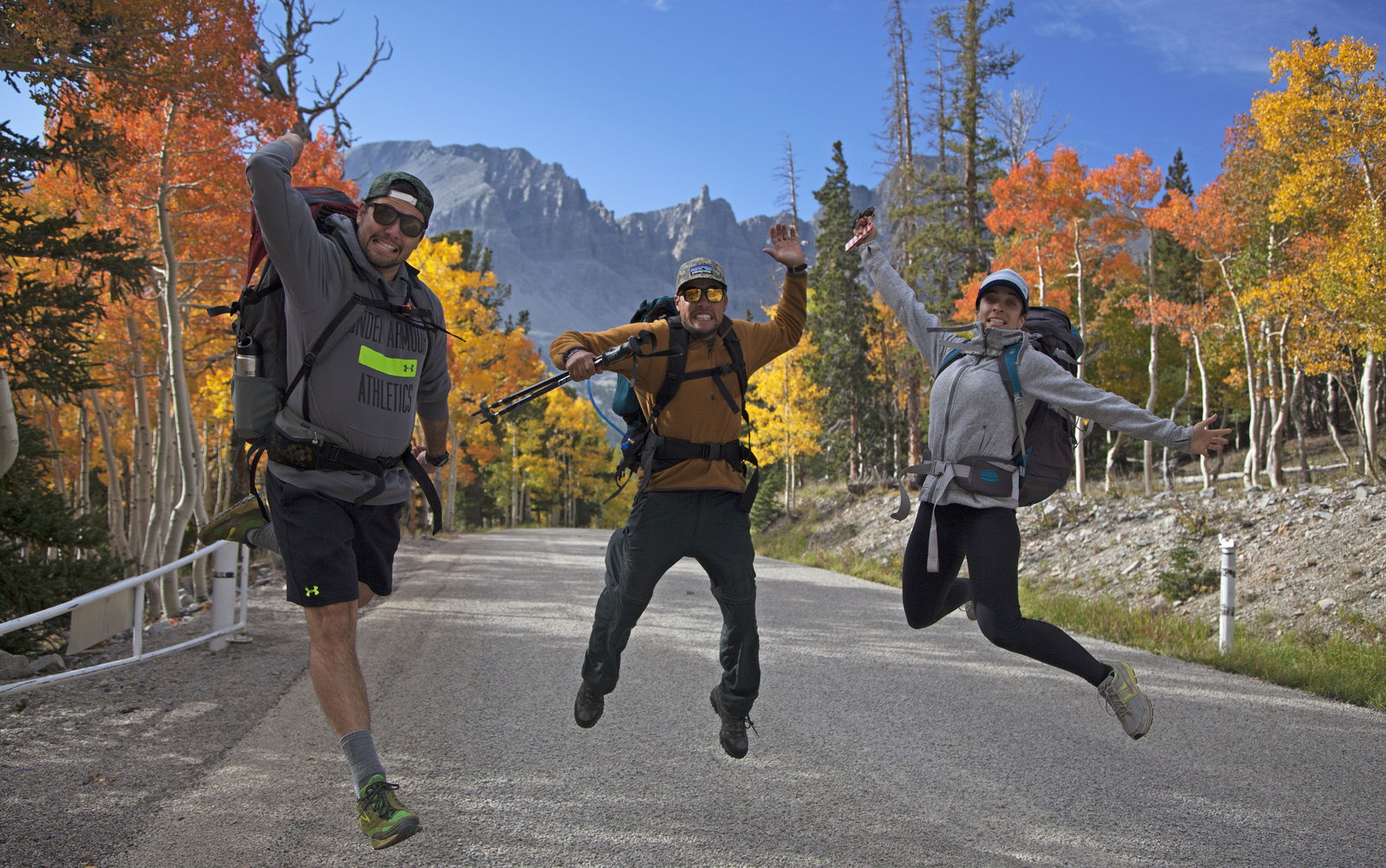It can be difficult to stand out in a state so rich in amazing outdoor wonders, but Great Basin National Park does just that.

Nevada’s largest national park is filled with fabulous natural treasures, from spectacular alpine lakes to limestone caverns and even a small glacier, yet it has an unusually low number of annual visitors. Visitors to the park in spring or fall can conceivably hike for hours on backcountry trails without seeing another soul.
For the outdoorsman looking to get away from it all, Great Basin National Park is the place to be. The park is known for its beautiful high mountain terrain, which is dotted here and there with cascading mountain streams, mountain lakes and bristlecone pine trees over 4,000 years old. Access to these and other features at Great Basin can be had from the visitors center located a short distance from the town of Baker. A scenic drive over paved road will take motorists to the 10,000-foot mark on the spectacular 13,063-foot peak of Mt. Wheeler. Tours of the amazing Lehman Caves offer glimpses at stalagmites, stalactites and rare cave formations such as helictites, calcite features that curve in such an astounding way that they seem to defy gravity.
The park’s namesake, the Great Basin, measures roughly 200,000 square miles and is home to over 800 species of plants and 61 species of mammals. This mystifying area drains internally, with no streams, creeks or rivers reaching either the Pacific Ocean or the Gulf of Mexico. With sights like these, as well as incomparable fishing, hiking, climbing, and more, Great Basin National Park is one Nevada treasure that should not be missed.
- Hours of Operation:
Open daily, year round, from 8:00 am to 4:30 pm Pacific Time.
Extended hours in the summer. Closed Thanksgiving Day, Christmas Day, and New Year’s Day.
Entrance Fee:
Great Basin National Park has no entrance fee. However, permits are required for certain activities in the park, as well as admission charges for admittance to Lehman Caves.
Climate:
There is almost an 8,000 foot (2,400 m) difference in elevation between Wheeler Peak and the valley floor, and weather conditions within the park vary with elevation. In late spring and early summer, days in the valley below may be hot, yet the snowpack may not have melted in the higher elevations. The Great Basin is one of the four deserts in North America, with low relative humidity and sharp drops in temperature at night. In the summer, fast moving weather systems are known to move in and out of the park suddenly, with fierce afternoon thunderstorms. Also, it can snow any time of the year in higher elevations.
Getting there:
By air: The nearest airport is located in Cedar City, Utah, 142 miles away. Major airports are found in Salt Lake City, Utah (234 miles) and Las Vegas, Nevada (286 miles).
By vehicle:
-From the east or west: From U.S. Highway 6 & 50, turn south on Nevada State Highway 487 and travel 5 miles to Baker, NV. In Baker turn west on Highway 488 and travel five miles to the park. –From the south (Utah): Travel north on Utah State Highway 21 through Milford, UT and Garrison, UT, which will become Nevada State Highway 487 as you cross the border. Turn west on Highway 488 in Baker and
travel five miles to the park.
-From the south (Nevada): Travel north on U.S. Highway 93 (Great Basin Highway). At the junction of U.S. Highway 6 & 50 drive east to Nevada State Highway 487 and turn south. Travel five miles to Baker, NV. In Baker turn west on Highway 488 and travel 5 miles to the park.
Hiking:
Great Basin National Park has more than 60 miles of hiking trails in the South Snake Range. Prime hiking season is June through September, and fall foliage is autumn months is out of this world. Elevation: 6,200′ to 13,063′.
Hikes Trails Include:
- Wheeler Peak Distance: 8.2 miles round trip Start Elevation: From summit trailhead 10,160’/Elevation gain: 2,900′ Difficulty: Advanced
- Bristlecone Trail Distance: 2.8 miles round trip from the Bristlecone Trail parking lot Start Elevation: 9,800’/Elevation gain: 600′ Difficulty: Beginner
- Bristlecone-Glacier Trail Distance: 4.6 miles round trip from the Bristlecone Trail parking lot Start Elevation: 9,800’/Elevation gain: 1,100′ Difficulty: Beginner
- Alpine Lakes Loop Trail Distance: 2.7-mile loop from the Bristlecone Trail parking lot Start Elevation: 9,800’/Elevation gain: 600′ Difficulty: Beginner
- Baker Lake Trail Distance: 12 miles round trip Start Elevation: 8,000’/Elevation gain: 2,620′ Difficulty: Advanced
- Baker Lake and Johnson Lake Loop Distance: 13.1 miles round trip Start Elevation: 8,000’/Elevation gain:3,290′ Difficulty: Advanced
- Island Forest Trail (Wheelchair Accessible) Distance: 0.4-mile loop from the Bristlecone Trail parking lot Start Elevation: 9,800’/Elevation gain: N/A Difficulty: Beginner
- Johnson Lake Trail Distance: 7.4 miles round trip Start Elevation:8,320’/Elevation gain: 2,240′ Difficulty: Advanced
- Lehman Creek Trail Distance: 6.8 miles round trip Start Elevation: From Upper Lehman Campground 7,750’/Elevation gain: 2,050′ Difficulty: Advanced
- Lexington Arch Trail Distance: 3.4 miles round trip Start Elevation: 7,440’/Elevation gain: 820′ Difficulty: Intermediate

Climbing:
The area in and around Great Basin National Park sees a limited amount of technical rock climbing, due to the hazardous, crumbly nature of the rock and the remoteness of the sites. Climbers are encouraged to register at the park visitor center prior to climbing in the park, as rescue resources are limited and may be hours away. Because of its remoteness, climbing parties should be capable of self-rescue. Chiseling, chipping, gluing, breaking away rock or otherwise altering rock is prohibited, which includes placing bolts or other fixed protection. Clean-aid, top-roping or traditional lead climbing are permitted. Some climbing is available at Windy Peak, which sits about 2 miles west of the park’s boundaries. All routes in the Wheeler Peak area are objectively hazardous with deadly rockfall at all times of the year.
Among the accessible places are The Diamond and the Wheeler Peak area. The Diamond is a 90’ crag of bedded quartzite rising from the top of a talus slope on the south bank of Lehman Creek between Upper and Lower Lehman Creek campgrounds. In the Wheeler Peak area, climbers can explore Solomon’s Arrow, the prominent needle rising on the northwest side of the Wheeler Peak Cirque. Shenandoah Wall is a 5.8 with uniformly solid rock. Nameless Tower is between Jeff Davis Peak and Wheeler Peak and offers three routes. YDS: 5.4 – 5.9 Grade: III, IV
Horseback riding:
Horses are allowed on most trails in the park but are not permitted on paved roads, in campgrounds (except for primitive campgrounds along Snake and Strawberry Creeks), in developed areas, interpretive trails, the Lexington Arch Trail or the Wheeler Peak Day Use Area. The park requires the use of certified weed-free feed.
Cross-Country Skiing:
Cross-country skiing enthusiasts will find plenty of snowy terrain in Great Basin National Park. One of the best places for a good cross-country tour is the 4-mile Pole Canyon Trail. Skiers in the park should remain alert for changing weather conditions and avalanche danger.
Fishing:
Five different kinds of trout inhabit the waters in the park, including Bonneville cutthroat (a native species), Lahontan cutthroat, rainbow, brook and brown. Anglers will find self-sustaining populations of trout in Baker Lake, as well as in Lehman, Baker, Snake, Strawberry and Shingle Creeks. Stella, Johnson, Teresa, Brown and Dead Lakes do not contain fish. Check the website for complete information on activities within the park.
Camping:
Great Basin National Park offers several camping locations throughout the night, including Lower Lehman Campground, Upper Lehman Campground and Wheeler Campground. These campsites are first come first served and can be secured for $12 per night. While these sites can accommodate 1-2 tents, larger group campsites are located within the park at Grey Cliffs Campground
Wildlife:
Great Basin National Park undoubtedly offers endless amounts of recreational activity and scenic beauty to enjoy, but the plant and wildlife population in the park is the true forte. Home to the oldest living tree known to man, the majestic 4,900 year old Bristlecone Pine can be found throughout the park and enjoyed by all. While there is a specific Bristlecone Hike, visitors can enjoy the Magic Grove near the center of the park, where the largest population of the Bristlecone call home.
Additionally, be sure to snag your binoculars before you hit the road, as you may have the opportunity to spot the incredibly diverse wildlife found within Great Basin. Visitors may be lucky enough to spot:
Rocky Mountain Elk, Pronghorn Antelope, Mule Deer
-Bighorn Sheep
-Beaver and Badger
-Porcupine
-Yellow-Bellied Marmot and Pygmy Rabbit
-Ringtail Cat, Bobcat and Mountain Lion
-Coyotes
-Bats
-Sage Grouse, Great Blue Heron, Harry Woodpecker, and dozens of other species
Great Basin National Park is a genuinely fascinating region Nevada is lucky enough to call home and should be visited by all. Any season is an excellent time to visit, but a particularly dazzling experience can be had when attending the annual Astronomy Festival, as Great Basin has continually been rated the best spot for stargazing in North America. Plot out your itinerary and make Great Basin National Park the next National Park on your list!
– See more at: http://travelnevada.com/discover/25824/great-basin-national-park#sthash.rvFeqIcg.dpuf
